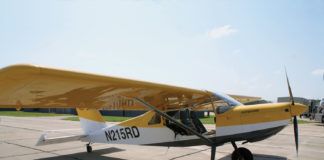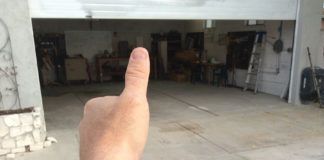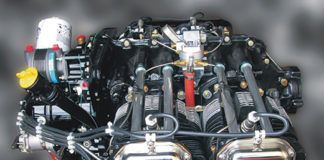Discussions regarding alternative engines—particularly auto-powerplant conversions—seldom seek the middle ground. You’re in or you’re out. A forward-looking free thinker or an arrogant, ignorant critic. Naturally, the opposite perspective orders the possibilities as optimistic fools compared to the head-on-shoulders realist.

William Wynne, Corvair-conversion impresario and auto-engine evangelist, described it to me like this: “In many Internet groups, when you bring up the possibility of an auto-engine conversion, those opposed rise and group together to club that notion like a baby seal. It has no chance.” Left unsaid is the fact that once the topic has been trotted out, doused in lighter fluid and flamed, builders without a strong internal compass walk away from the possibility of an alternative engine and never come back.
I spent a day at the West Coast Corvair College, hosted by our own Rick Lindstrom as part of his new FLAG—First Light Aviation Group—venture. Wynne was there, of course, as were 50 attendees. The goal of the school was to provide an informal set of courses that help builders select, refine and finish their Corvair engine conversions. Students represented both newbies and old hands, and were provided an opportunity for not just wrenches-on instruction—engines actually get built!—but to meet with vendors who make such a conversion possible.
That’s all great, of course, but what I took away from the day was the image of Wynne “preaching” to the group, sharing his philosophy on how to survive an alternative-engine project. And I don’t mean, necessarily, how to build one and not get killed—that’s taken for granted at this level. Instead, he offered ways to offset the onslaught of negative commentary from the anti-conversion crowd, mixed in with a sermon to, in essence, quit dinkin’ around and get the airplane done! I smiled at Wynne’s clarity, and found myself nodding along in agreement.
Step back and look at the bigger picture: Do builders who follow the alternative-engine route need someone like Wynne? I think they do, strictly on the grounds that any alternative-engine project is going to be more difficult, more challenging, more pure effort than slapping a known powerplant onto the front of your airplane. Don’t take that as a slight to the category; it’s not intended to be. But the simple fact is that most airframe manufacturers embrace known quantities because doing so helps speed development, and they believe that the finished product, with a conventional engine, is more desirable to the general public.
For that reason, the hours of development work put forth by the kit maker in fine-tuning a firewall-forward installation does not translate to the alternative-engine fan; all that work is now in the builder’s or converter’s hands.
Experience says that some outfitters—the companies selling FWF kits—are better than others in the development realm, but that the execution of a truly plug-and-play conversion remains elusive. How much of the development work winds up back in the builder’s lap is never really known until the project is complete.
And just getting that far can be a challenge. Builders like Larry Simpson, whose airplane is on this month’s cover, have continued to evolve their projects methodically, never seriously giving up. Other builders I know have taken alternative-engine projects past first flight and into Phase I, had seemingly insurmountable troubles and abandoned them, either switching to a conventional engine or dropping the project altogether.
What does that tell you? First, you need to be honest with yourself. If the goal is to get your airplane project airborne, to use it as a pleasure or business tool, then you are probably not an alternative-engine candidate. If, however, you crave the physical and intellectual challenge, have a burning desire to prove you can do what most can’t—and have the patience to execute your vision—then it’s time to open your eyes to the possibilities.













